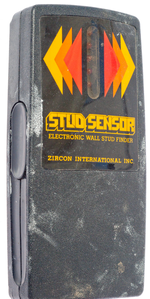When we e-file a new patent application in EFS-Web, the prize that we seek is the all-important application number. EFS-Web gives us this very important number within seconds of our clicking “submit”.
When we e-file an assignment in EPAS (the system for e-filing patent assignments for recordation), the prize that we seek is the all-important reel and frame number. But the EPAS system does not give us this very important number right away. Usually it takes a few days.
Why does it take a few days? Why does USPTO not provide the all-important reel and frame number within seconds of our clicking “submit”?
A cynic would imagine that the explanation is an LMR (labor-management relations) issue. Maybe the USPTO feels it cannot do away with these jobs.
I suppose that’s not the explanation. I suppose the USPTO feels the need to check the uploaded PDF to see if it contains scandalous subject matter. And perhaps to check to see whether the document appears on its face to be an assignment (rather than, say, a newspaper clipping).
Normally this takes two or three days. But we have an assignment that we e-filed on October 10, 2016. Almost a month has passed and still we do not have the all-important reel and frame number.
So we phoned up the Assignment Branch. Once a couple of weeks ago and again today. The people who answer the phone there are very nice. They did not fix the problem, but they are very nice. It seems that our submission is still “in process”.
This particular assignment conveys several dozen properties. I asked the Assignment Branch person whether this might explain the delay. She said no, the delay is not due to the large number of properties. She also said no, it is not tied to the type of conveyance. It is just the large number of assignments that had been e-filed.
This actually doesn’t make a lot of sense to me. We have e-filed at least a dozen assignments since that one on October 10, and in each case we received the all-important reel and frame number within a couple of days.
So I don’t really understand why this one is outstanding since October 10.
How old is your oldest assignment that does not yet have a reel and frame number? Please post a comment below.
 I’ll be speaking today with a 2016 PCT update. This is for the Boulder County Bar Association. It is at noon, at the offices of Lathrop & Gage, 4845 Pearl East Circle, Boulder, CO 80301. (map)
I’ll be speaking today with a 2016 PCT update. This is for the Boulder County Bar Association. It is at noon, at the offices of Lathrop & Gage, 4845 Pearl East Circle, Boulder, CO 80301. (map)

